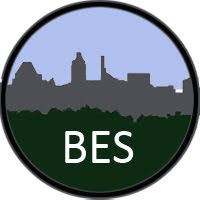Are You an Urbanist?
Urbanists and the Old Walls
The term, urbanist, originally meant someone who designed and built cities. The term is an old one, and when it was introduced into English in the 16th century, cities were very different than now. Many cities were walled, defensive, or religious centers. The boundary and contrast between city and country was sharp and distinct. In fact, urban is derived from the Latin, urbis, which means a walled city or town. Gates and battlements were essential features of the city, and people whose presence was not desired in the secure city after nightfall, camped below the walls that excluded them. They were relegated to the suburbs, literally, the place below the wall.
 |
| The walls of Marrakesh, 1990 (S.T.A. Pickett) |
In the walled city, there was little space for nature. Streets of such places were often narrow and hemmed in by buildings. Perhaps the pleasant courtyards of the houses of the well to do had a few trees, flowering vines, or potted plants. But streams, gardens, farms, and the threatening and dark forest, were all outside the walls. Urbanists in the classical and original sense thus worked with stone and mortar, timber and plaster. A philosophy developed from these practices that separated city and country.
Wall Street in New York City signals a distant memory of the defensive stockade that protected colonial New Amsterdam from the non-colonized remainder of Manhattan; the massive walls of Beijing were demolished under Mao to signal the break of modern China from the imperial, feudal past; the walls of Paris are now traced by Haussmann’s boulevards – itself a term derived from the French word for the defensive constructions we know in English as bulwarks.
Beyond the Walls
| A New Orleans courtyard |
So urbanists – those concerned with the form and processes of dense, heterogeneous human settlements – are no longer hemmed in by walls. Nor must they neglect urban nature due to a lack of space, or due to a philosophical dialectic between nature and city. Contemporary urban form is manifestly inclusive and diverse.
City-Suburban-Exurban Systems: The Expanded Territory of Urbanists
 |
|
| Baltimore City and part of Baltimore County. |
In BES, we often use the term “urban” to stand for the entirety of porous urban regions. A neologism we have introduced is CSE, or city-suburban-exurban, to stand for the spatially extensive systems that contemporary settlements often represent. Throughout this diverse range of districts, neighborhoods, land uses, and densities of occupancy, planners follow the lead of pioneers such as McHarg (1969) or Spirn (1984) in recognizing the need for plans and designs to blend the built and the natural.
This same inclusiveness supports our research strategy of addressing the CSE as a hybrid system comprising the built and the natural, the intentional and the incidental. So, the term urbanist can include all of us who are concerned with the existing and potential structure and functioning of CSE systems. Urbanists go beyond the “walls” and they see and value nature within the porous boundaries of CSE regions.
So, are you an urbanist?
References
McGrath, B. and S.T.A. Pickett. 2011. The Metacity: A conceptual framework for integrating ecology and urban design. Special Issue: Challenges in City Design: Realize the Value of Cities. Website: http://www.mdpi.com/si/challenges/city_design/ Guest Editor: Prof. Dr. Kongjian Yu. Challenges 2011, 2, 55-72 doi:10.3390/challe2040055
McHarg, I. 1969. Design with nature. Doubleday/Natural History Press, Garden City, NJ.
Spirn, A. W. 1984. The granite garden: urban nature and human design. Basic Books, New York.


